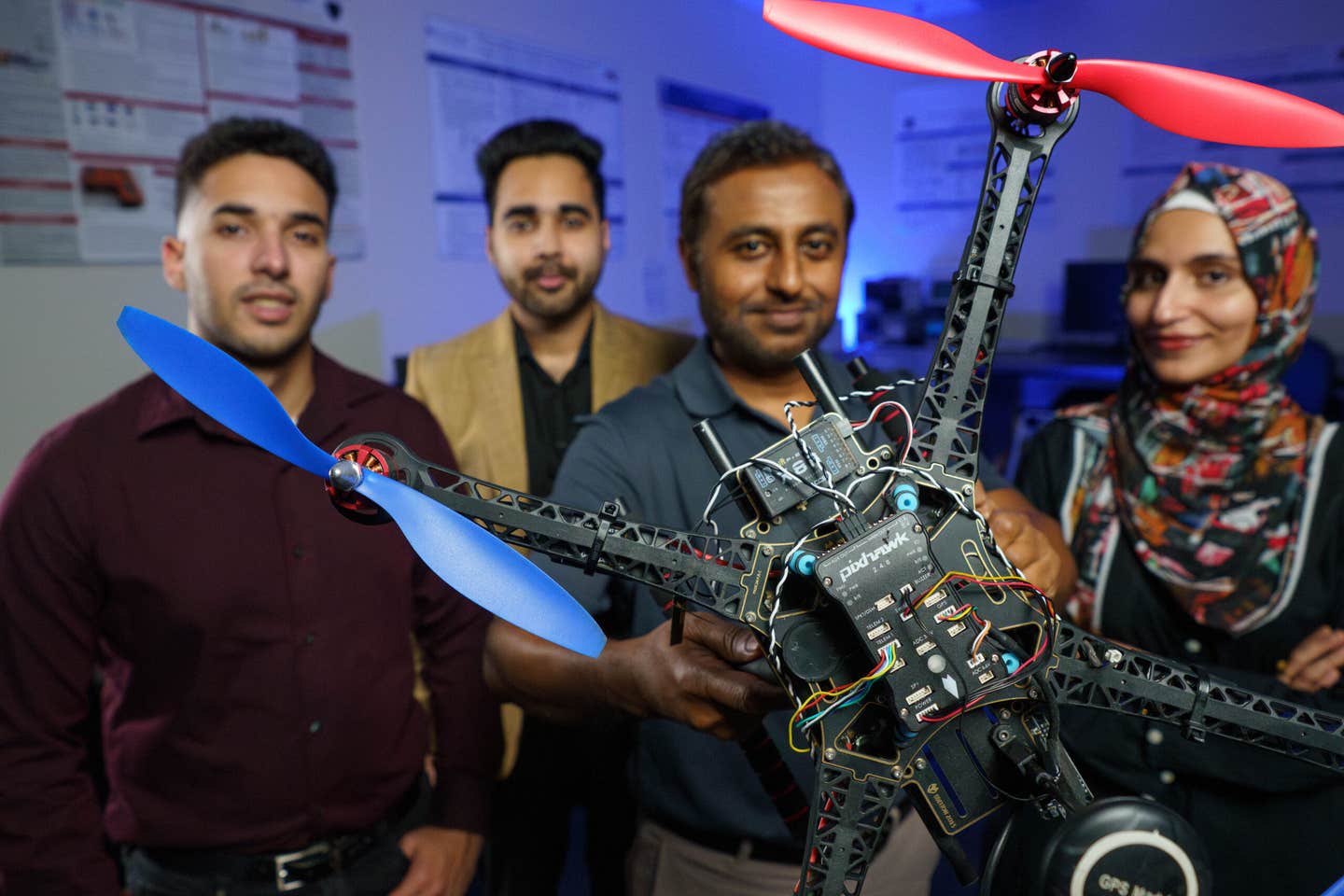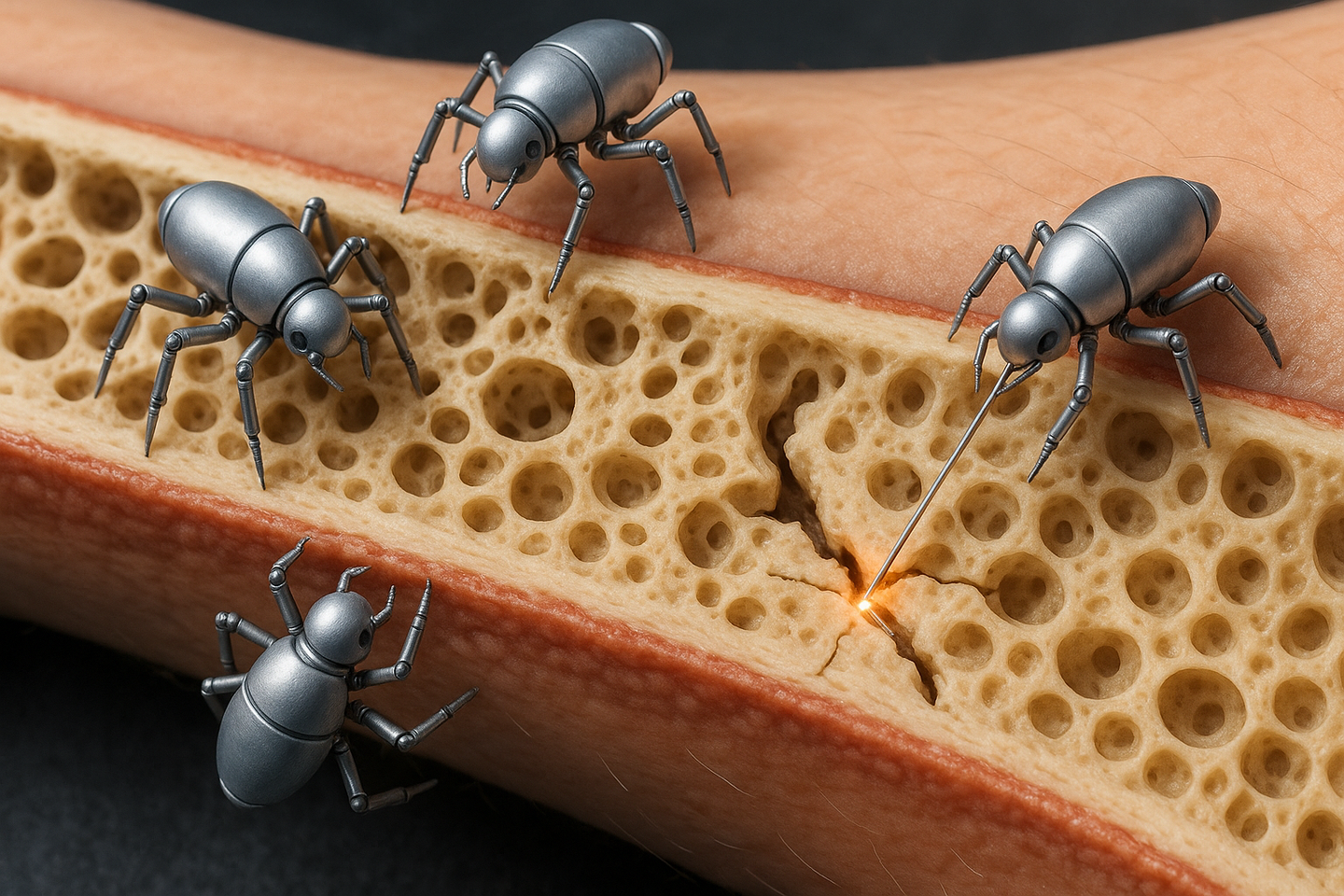SHIELD protects drones from cyberattacks midflight in real time
FIU scientists develop SHIELD, a self-healing system that detects and recovers drones from cyberattacks in real time.

Florida International University researchers have developed SHIELD, a breakthrough system that helps drones detect and recover from cyberattacks while staying airborne. (CREDIT: Chris Necuze/FIU)
Unmanned aerial vehicles, or drones, are no longer the amateur toys they used to be. They're now lifelines for industries ranging from agriculture and construction to defense and emergency response. But as drones grow more connected and autonomous, they're also growing more vulnerable to cyberattacks that can hijack their systems mid-flight. A new cybersecurity system developed by Florida International University (FIU) aims to put an end to that.
In FIU's Analytics for Cyber Defense and Advanced Wireless and Security Labs, computer scientists Muneeba Asif, Jean C. Tonday Rodriguez, Mohammad Kumail Kazmi, Mohammad Ashiqur Rahman, and Kemal Akkaya developed SHIELD, a groundbreaking security system designed to detect and retrieve drones from sophisticated attacks in real time.
SHIELD—Side-channel analysis-based multimodal Holistic Intrusion Evaluation with Layered Defense—is a guardian and physician for drones. It not only identifies the signs of a cyber breach, but it also heals the system so the drone can carry out its mission safely.
Finding Trouble Before It Happens
Every drone takes to the air on the basis of a delicate interaction between sensors, controllers, and actuators. Sensors gather data from the world, controllers analyze it, and actuators adjust the drone's motors to keep it in the air. If hackers taint any of that chain—spoofing GPS signals, feeding it forged data, or altering control commands—the drone can crash, veer off course, or hang suspended in the middle of nowhere.
While most detection systems focus on a single component—like the sensors—SHIELD monitors and analyzes the entire network as a unified whole. It looks beyond what sensors reveal and attempts to find subtle physical signals—so-called side-channel data—like power consumption, vibration, CPU utilization, and battery drain rates. Those are harder for attackers to mimic because they represent the physical state of the drone, not its digital state.
In FIU's study, SHIELD detected threats up to six times faster than conventional detection systems. Abnormal current draw or battery utilization would typically trigger the system before the drone even began losing equilibrium. In most scenarios, SHIELD picked up on anomalies in less than a millisecond, giving it precious time to respond before disaster.
Recognizing Drone Attacks
One of the strengths of SHIELD is that it can recognize attacks. Each tampering mechanism has a unique signature. An attack on the control unit via denial of service consumes more CPU and power, while tampering with actuators results in anomalous vibration and power patterns. Sensor spoofing makes the drone spend energy trying to reorient itself back on track.
By looking at several different types of data at once, SHIELD not only knows that there is an attack in flight but what kind of attack it is. That does make a difference because the recovery action depends on the threat. Instead of grounding the drone or doing a blind reset, SHIELD takes that information to make targeted corrections with as little downtime as possible.
Lead researcher Mohammad Ashiqur Rahman, a faculty associate professor at FIU's Knight Foundation School of Computing and Information Sciences, further stated that existing defenses can detect threats but cannot help the drone recover. "With no robust recovery mechanisms, a drone can't complete a mission in the presence of attacks," Rahman said. "What makes our framework unique is that it recovers the system so the mission can be completed."
Self-Healing in the Sky
Whenever SHIELD detects an attack, it invokes a pulse-width modulation, or PWM-based recovery process—a method of controlling the amount of power that is supplied to the motors. Through re-tuning such signals, SHIELD recovers to stable flight even after parts of the control system have been hijacked.
In one of the experiments, researchers simulated GPS spoofing that led a drone to stray as far as 80 meters off course. SHIELD's correction system narrowed down this deviation to just 10 meters, near what is considered normal operation. Under the second circumstance, in which there was a try to hijack motor signals, the system capped altitude errors at 5 percent of normal.
Equally impressive was SHIELD's reactivity. The system reacted and adjusted to assaults in under 0.6 milliseconds, quick enough to be integrated with traditional autopilot systems such as PX4. That is, the drone can keep flying safely as it defends itself—no input needed from the human.
Tested and Proven
To validate the performance of SHIELD, FIU researchers used both simulated environments and real UAV testbeds with Pixhawk flight controllers. They conducted various types of cyberattacks like sensor spoofing, control manipulation, and actuator interference to measure the effectiveness with which SHIELD could defend against them.
In hundreds of experiments, the system correctly sensed attacks 99.9 percent of the time and produced far fewer false alarms than normal intrusion detection systems. Even in the presence of multiple simultaneous attacks, SHIELD flew smoothly and remained on course with its mission.
These results hold high stakes for both civilian and defense applications. Whether inspecting bridges, monitoring wildfires, or delivering medical aid, drones with SHIELD could operate much more dependably even under cyber attack.
Securing the Skies
The timing couldn't be more urgent. The Federal Aviation Administration recently proposed expanding commercial use of drones across industries. That's more drones aloft—and more targets for hackers.
"Reliable and secure drones are the gateway to innovation in the future," said Rahman. "We hope our work can be a contributing element in advancing the industry."
Aided by the National Security Agency, Department of Energy, and National Nuclear Security Administration, the researchers at FIU are already planning the next move: adapting SHIELD to other cyber-physical systems like autonomous vehicles, factory robots, and even hospital equipment. They hope to create a universal defense layer that can protect any machine that relies on sensors and controllers.
Practical Implications of the Research
By providing a real-time, self-healing model of cybersecurity, SHIELD can potentially redefine the way drones and other autonomous systems operate. For commercial applications, it means fewer crashes, more reliable delivery, and safer inspections. For public safety and defense, it ensures mission continuity even in the face of attack.
Aside from drones, SHIELD's multimodal defense system could serve as a blueprint for protecting future smart devices—ranging from hospital equipment to factory robots—against cyber-physical threats.
As more human actions are automated, models such as SHIELD will be necessary to secure both humans and machines.
Research findings are available online in the journal IEEE Xplore.
Related Stories
- AI drone swarms revolutionize wildfire detection and air quality monitoring
- Meet Skydweller: The autonomous solar-powered drone that can fly for 3 months without landing
- Scientists create the next-generation of secure quantum communication
Like these kind of feel good stories? Get The Brighter Side of News' newsletter.
Shy Cohen
Science & Technology Writer



